For chestnut trees — a quick note to anchor this piece for readers.
For chestnut trees: Quick notes
Chestnuts are delicious and nutritious, and they’re common in holiday dishes during the cold, winter months. The nuts mature at the end of the season, ripening as summer turns into fall. Gather them to roast over an open fire, but be sure to stay away from Jack Frost nipping at your nose!
In all seriousness, chestnut trees are lovely nut trees in home landscapes. They grow ornamental flowers in summer, and the blooms evolve into chestnuts over the growing season. Some species are giant specimens, while others tend to grow into multi-stem shrubs.
No matter which you choose, you’ll want to give your chestnut trees the care they need to thrive. A healthy chestnut tree lives a long time; plant one today, and it’ll live longer than you!
Chestnut Tree Overview
Plant Type
Deciduous tree
Native Area
Northern Temperate Hemisphere
Exposure
Full sun to partial shade
Watering Requirements
Low
Pests & Diseases
Blight, powdery mildew, borers, and weevils
Soil Type
Well-drained, neutral to acidic
What Is It?
 Stately trees provide shelter for birds and wildlife.
Stately trees provide shelter for birds and wildlife.
Chestnut trees are deciduous species in the genus Castanea. They’re stately specimens with serrated, glossy leaves and bright white blooms. In the right spot, a chestnut tree forms a lovely structure that supports wildlife as it grows.
Native Area
 It thrives where winters are crisp and summers are hot.
It thrives where winters are crisp and summers are hot.
Chestnuts are native to parts of North America, Asia, and Europe. They thrive in the temperate regions of the northern hemisphere. These trees prefer cool winter temperatures, warm summers, and lots of sunlight in their native range.
Different chestnut species thrive under slightly different conditions. Multi-stem, small species tend to prefer sunny sites with little moisture, while the large trees need plenty of open space to thrive.
In gardens, chestnuts grow best in well-drained soil under full sun. They need a location that has cold winters and long, hot summers. Most chestnut trees work well in USDA hardiness zones 4 through 9, with some exceptions.
Characteristics
 Fragrant flowers appear, adding charm to the branches.
Fragrant flowers appear, adding charm to the branches.
These trees are lovely no matter the season. Their leaves change colors in the fall from green to orange-yellow. They fall to the ground, revealing the ridged, knobby bark and twisting limbs in winter.
In spring, buds emerge and open into lush, glossy-green leaves. After the leaves, fragrant male and female flowers sprout separately on the same tree. They tend to be incompatible, and you’ll likely need to plant two chestnuts next to each other for efficient pollination and nut formation.
Some species, like the Chinese chinquapin C. henryi, are self-fertile. They’ll pollinate themselves if they must, though they’ll have better rates if they grow near another chestnut tree.
The American chestnut tree is extremely susceptible to blight from the fungus Cryphonectria parasitica. It fares better in the western U.S. than in the eastern states. If the blight is rampant in your region, plant a hybrid variety or blight-resistant species, like the American chinquapin C. pumila.
Planting
These trees need a proper planting to thrive through the rest of their lives. Give chestnut trees the care they need now, and they’ll thank you with bushels of edible chestnuts in the future. If you’d like to experiment, try planting lots of American chestnut tree seeds. You may discover a new blight-resistant specimen!
Transplanting
 Planting correctly gives saplings the strongest possible start.
Planting correctly gives saplings the strongest possible start.
Find a chestnut tree for your garden at a local plant nursery or a specialty grower with an online shop. Saplings are available in containers all year. Find bare-root or B&B (balled and burlapped) saplings during the dormant season.
Start by preparing a hole as deep and twice as wide as the tree’s rootball. Use a shovel to dig, and place the soil nearby so you can use it. Remove potted plants from their container, and set bare-root saplings on a hump of dirt in the hole to support the young roots.
Leave the burlap on B&B trees. Simply remove the twine at the top and unroll the upper portion of the burlap to reveal the root flare, where the roots diverge from the main trunk. Set the tree inside, and place enough soil on top to cover the roots.
Water the tree well after planting, and add more soil on top if it settles below the surface. Guarantee planting success by covering the site with a two to three-inch layer of mulch, like compost or straw. Leave a gap between the mulch and the chestnut’s trunk.
Growing from Seed
 Pot seedlings up after a year’s growth.
Pot seedlings up after a year’s growth.
Growing trees from seeds takes a long time. If you want chestnuts in the next few years, you’ll want to plant saplings instead of seeds. Grow seeds for a fun experiment, or if you’d like to breed blight-resistant cultivars.
Sow seeds in pots when they begin falling to the ground. Place them in a sheltered spot, like a porch or patio, and water the seedlings consistently while they mature. Aim to keep their roots moist, but not soggy.
The plants will need some time to mature before they’re ready for transplanting. Pot them up into larger containers after a year, or put them in the ground when they’re a few inches tall.
You can also direct sow chestnut seeds in the garden. Trees that have been directly sown in the ground will form better root systems than potted ones.
How to Grow
Chestnut trees are drought-tolerant and resistant to growing issues when they’re mature. Give them a good start in your garden so they last many years. With a proper planting spot and good growing conditions, your chestnut tree will outlast most of your other plants in the landscape.
Light
 Dappled light fills gaps when direct sun is limited.
Dappled light fills gaps when direct sun is limited.
Give your trees full sun to partial shade, with at least two to three hours of daily direct sunlight. They prefer full sun, though they’ll survive with shadier conditions. The trees will grow upright and dense under the sun, and they’ll be lanky and long in the shade.
If your chestnuts have only two or three hours of direct sunlight, ensure they have dappled sunlight for the rest of the day. Dappled sunlight occurs when the sun’s rays poke through the canopy of taller trees above.
Water
 Old specimens handle summer heat surprisingly well.
Old specimens handle summer heat surprisingly well.
These specimens prefer consistent moisture during the growing season. Old trees are drought-tolerant during the summer months when temperatures are high. They’re also heat-resistant, growing well in warm, southern climates.
Avoid overwatering, as soggy conditions invite diseases and root rot. Keep the roots healthy and vigorous by letting the soil surface dry before watering again. Check the dirt with your finger if you’re unsure; poke it below the surface, and sense whether it’s wet or dry.
Soil
 Neutral to slightly acidic dirt suits growth best.
Neutral to slightly acidic dirt suits growth best.
Chestnuts need well-drained soil to thrive, though they’re widely adaptable to soils with too much clay or sand. Surprisingly tough, these trees grow better than most others in poor soils.
They’ll fare well in neutral to slightly acidic conditions. Amend the soil with compost throughout the year to boost your trees. Keep the layer two to three inches thick, and leave a two-inch gap between the trunk and the mulch.
Fertilizing
 Amendments improve soil when deficiencies slow development noticeably.
Amendments improve soil when deficiencies slow development noticeably.
Chestnuts need few nutrients to survive. They’ll fare well with annual additions of compost, and they rarely require regular fertilizer applications. If you’re growing them for the nuts and you’ve had poor harvests, you may want to check the soil for nutrient deficiencies.
Use a soil test to determine the soil’s pH and nutrient levels. If the pH is too basic, or if nitrogen, phosphorus, and potassium are low, consider using amendments to improve the site.
Maintenance
 Nut litter can be left to nourish the soil.
Nut litter can be left to nourish the soil.
Chestnut trees require little maintenance to thrive. Prune them as necessary in late winter or early spring, and remove dead, damaged, or diseased wood anytime.
Chestnuts drop lots of litter, as their leaves and nuts fall to the ground at the end of the growing season. Let the litter cover the soil so it can decay into nutrient-rich humus over time. If there’s a lawn below the tree, use a blower, leaf rake, or mulch mower to remove the debris from the grass.
Propagation
Propagate chestnuts with cuttings or seeds. Save seeds when you collect the nuts for roasting, and keep them in a dark, dry location until you’re ready to sow them. Take softwood cuttings from spring through summer, and hardwood cuttings in the fall and winter.
Cuttings
 Transplant rooted cuttings after a year or longer.
Transplant rooted cuttings after a year or longer.
Chestnuts are notoriously difficult to grow from cuttings. Patience is necessary during the process, and know that some species may not reliably root from stem cuttings. Take softwood cuttings in spring after the leaf buds open, and hardwood cuttings during the cold months.
Cut four to six-inch pieces from the stems, and place each cutting into a pot with potting soil. Remove the lower leaves of softwood cuttings before putting them into the pots. Keep the stems moist, but not soggy, and cover them with a dome while they root.
Leave the young trees in their pots for a year or longer while they root. Transplant them into larger pots, or put them in the ground in fall or spring.
Seed Saving
 Harvested nuts make easy seeds for next season.
Harvested nuts make easy seeds for next season.
Chestnut seeds are easy to save. The nuts are the seeds, and all you have to do is save a few when you harvest your trees. Peel them from the husk, and set them in glass, paper, or plastic containers.
Store the containers in a cool, dark, and dry location. They’ll keep well in a pantry or drawer, or in the refrigerator. If you’re storing the seeds in the fridge, first put them in containers to make sure they don’t dry out.
Harvesting and Storage
 Roasting nuts brings out a richer, sweeter flavor.
Roasting nuts brings out a richer, sweeter flavor.
Harvest young, well-pruned trees by hand with a basket. Collect the nuts from the branches before they fall to the ground. If your tree is large and too big to pick by hand, simply gather the falling nuts daily until you pick them all up.
Chestnuts come with natural packaging. They have spiky husks, and you’ll need to remove them to enjoy the nuts. Crack them or split them with a metal tool to open them.
Chestnuts are edible raw or cooked, and they have a better flavor after roasting. Use them raw in salads, or roast them to enjoy as a snack. After roasting, grind them up with other nuts to make homemade nut butter.
Store roasted or fresh chestnuts in a pantry, drawer, or cupboard. Keep them in a dry container so they stay fresh.
Common Problems
Chestnuts are prone to a myriad of growing issues. They need special care to thrive, especially if pests or diseases begin to affect them. The American chestnut, C. dentata, is especially prone to chestnut blight, and many other species are mildly susceptible to the condition.
Pests
 Healthy plants resist insects better than neglected specimens.
Healthy plants resist insects better than neglected specimens.
Watch for aphids, gall wasps, borers, and weevils. Aphids affect the leaves, while the other pests affect the wood and nuts of your chestnut specimens. Hose off leafy pests, and use nets to protect the nuts from weevils.
Borers target weak trees, and it’s important to keep your chestnut as healthy as possible to prevent them from infesting the site. Once they infect the wood, they’re incredibly difficult to remove. Consult an arborist to determine the best route for your tree.
Diseases
 Leaf spots appear more on shaded, damp branches.
Leaf spots appear more on shaded, damp branches.
Chestnut blight is the most dangerous disease affecting these trees. It causes tree mortality, killing weak and healthy specimens alike.
The best defense against the blight lies within chestnut genetics. Plant a blight-resistant species or variety to prevent the condition. No other option is suitable, as the blight will eventually infect susceptible specimens over time.
Though minor, you may also see leaf spots or powdery mildew on shaded, wet trees. Improve drainage and airflow to eradicate the diseases.
Frequently Asked Questions
Many of our native species succumbed to the chestnut blight in the early 1900s. Giant chestnuts dominated eastern forests, earning them the name “Redwoods of the East.” The blight wiped them out. Nowadays, conservation efforts are making headway in producing a blight-resistant American chestnut.
Yes, they are! They grow quickly in gardens with full sun.
Some species can, though most of them require the presence of another tree for efficient cross-pollination.
We reference For chestnut trees briefly to keep the thread coherent.
A short mention of For chestnut trees helps readers follow the flow.




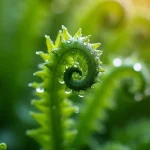



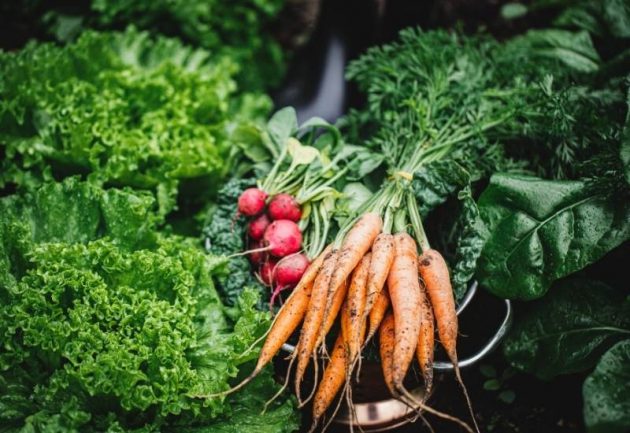
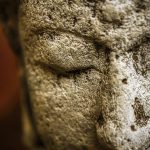
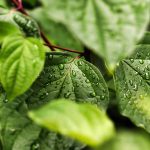


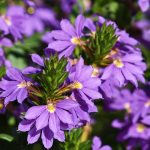
We did this last spring—digging in the rich soil and watching them take root. Now they stretch tall, chestnuts glinting in the afternoon light.
Watching your chestnuts glisten in the sunlight brings such sweet satisfaction—it’s amazing how patience with the soil pays off in splendor.
Reminds me of my grandma’s garden—she always said chestnuts need room to breathe. The guide’s tip on well-draining soil and sunlight makes sense; I’ll try that in my yard. Fingers crossed they thrive!
Just started planting chestnut trees this spring! They love well-drained soil and a sunny spot. Water regularly and mulch to retain moisture. They’re hardy and grow quickly once established.
I remember the old chestnut tree in my grandma’s yard—those ripe nuts were such a treat! Planting one now, it’s already giving shade and a cozy vibe.